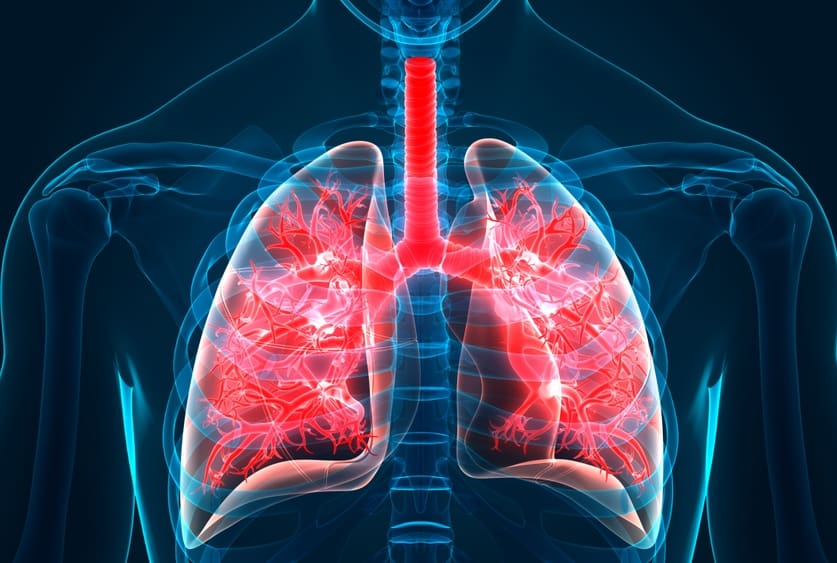Idiopathic pulmonary fibrosis (IPF) is a chronic, progressive fibrotic lung disease characterized by scarring or thickening of lung tissue that gets worse over time. As the lungs become scarred and fibrotic, it makes breathing difficult and puts undue strain on the heart that has to work harder to pump oxygenated blood through the body. Though the exact causes are unknown, IPF can be fatal, with median survival of 3-5 years from diagnosis. In this article, we explore various aspects of this devastating illness in detail.
What is Idiopathic Pulmonary Fibrosis?
Idiopathic pulmonary fibrosis, commonly referred as Idiopathic Pulmonary Fibrosis, is a specific form of chronic fibrosis in the lungs characterized by scarring in the small sacs (alveoli) where oxygen exchange usually takes place. This scarring causes the lung tissue to thicken, stiffen, and lose its normal ability to take in oxygen from the airspaces into the bloodstream. As a result, the patient has progressive breathlessness on exertion.
IPF is defined as a specific form of chronic, progressive fibrosing interstitial pneumonia of unknown cause, occurring primarily in older adults, associated with the histopathologic and/or radiologic pattern of usual interstitial pneumonia (UIP). Though the term “idiopathic” indicates no known cause, IPF is often related to environmental exposures, genetic factors, aging and other conditions.
Causes and Risk Factors
While the exact causes are still unknown, certain risk factors have been linked to higher chances of developing IPF:
– Age: IPF predominantly affects people over 50 and is rare below 40. Median age at diagnosis is 66-67 years.
– Gender: Men are twice as likely to develop IPF than women.
– Smoking History: Cigarette smoking greatly increases the risk, with pack-years of smoke exposure correlating with increased severity.
– Gastroesophageal Reflux: Long-term acid reflux may be a contributing factor in some patients.
– Genetics: Rare familial or genetic forms exist. Telomere abnormalities and mutations in certain genes have been linked to IPF.
– Environmental Exposures: Occupational dust or chemical exposures to coal, metal, wood, stone, asbestos, farming increase susceptibility.
– Pre-existing conditions: Some patients have a pulmonary infection, autoimmune disease or vascular condition before developing IPF.
Symptoms and Diagnosis
The main symptoms of IPF include:
– Persistent dry cough which may produce small amounts of sputum.
– Gradual onset of shortness of breath, especially during exertion. The breathlessness progresses slowly over months or years.
– Finger clubbing – enlargement and rounding of the finger ends.
– Crackles or velcro-like lung sounds on chest auscultation.
Pulmonary function tests may show decreased lung volumes and impaired gas exchange. High-resolution CT scan typically reveals subpleural reticulation with honeycombing. Surgical lung biopsy showing UIP pattern is often required for definitive diagnosis when CT and clinical features are not conclusive.
Management and Treatment
At present, there is no known cure for IPF. The treatment aims to slow disease progression and improve quality of life by:
– Oxygen therapy at home if oxygen levels drop significantly.
– Pulmonary rehabilitation including breathing techniques and exercise.
– Lung transplantation evaluation in selected patients.
– Antifibrotic drugs like Pirfenidone and Nintedanib help reduce decline in lung function.
– Treating underlying conditions like acid reflux aggressively.
– Palliative care focuses on symptom relief.
– Participation in clinical trials for newer therapies.
Prognosis and Outlook
IPF has a median survival of 3-5 years from diagnosis but varies considerably. Several factors determine prognosis including lung function at presentation, rate of decline and presence of certain biologic features. Some patients experience periods of stability while others progress rapidly over months. Over 50% die from respiratory failure or related pulmonary complications. Lung transplantation remains the only life-prolonging option for selected individuals. While no cure exists yet, better understanding of disease mechanisms and identification of novel drug targets offer hope for more effective therapies in the future to halt or reverse the scarring process.
IPF is a chronic, progressive fibrotic lung disease that slowly destroys lung tissue and function leading to worsening breathlessness and high mortality. Though the exact causes are unknown, certain risk factors have been identified. Early diagnosis and aggressive management offer the best chance to delay progression. Continued research holds promise for development of disease modifying therapies and eventually a cure for this devastating illness.
*Note:
1. Source: Coherent Market Insights, Public sources, Desk research
2. We have leveraged AI tools to mine information and compile it

